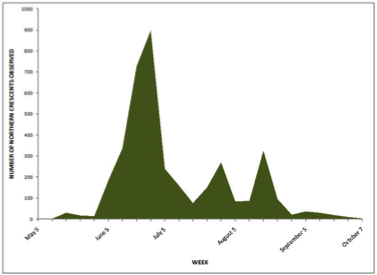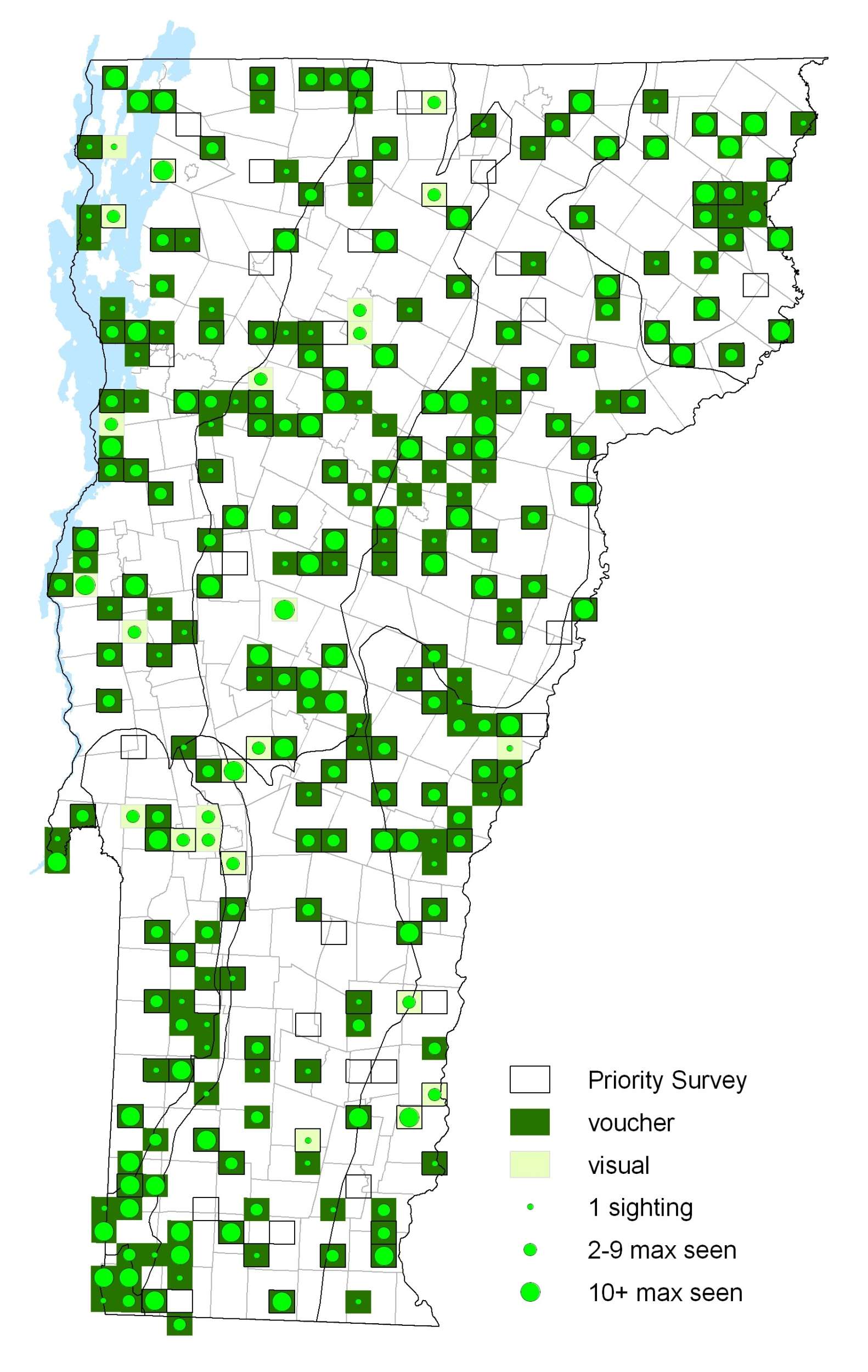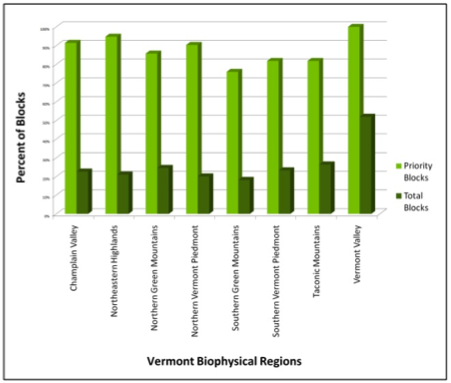|
Resident Conservation Status North American Range |
Phyciodes cocyta selenis is known to be a separate species from P. tharos, mostly based on sympatry of the two species over large regions of North America. P. diminutor diminutor is known to be a separate species from P. tharos, as they are sympatric in southern Minnesota, southern Ontario, northern Ohio, and evidently also in Vermont and Pennsylvania. Wahlberg et al. (2003) found that the mtDNA showed tharos to be a distinct species from the P. cocyta-group, and found that P. tharos and P. diminutor could be distinguished by mtDNA where they are sympatric in southern Minnesota. Until further work can be completed in Vermont, we treat both here as a P. cocyta group.
Phyciodes vouchers from VBS were sent for identification to James Scott, who has recently revised the taxonomy of this group (Scott 1986, 1994, 1998, 2006). Most photographs could not be confidently identified because key characteristics were not adequately shown (J. Scott). Most females could not be identified because Phyciodes females are less different between species than are males. Even many males could not be identified, because the characters of P. tharos and the P. cocyta group (including P. c. selenis and P. diminutor diminutor) vary considerably and the species overlap in the variation of characters. Only specimens confidently identified were those that contain most of the key characters in a state that is most different from the state possessed by most of the typical or most different individuals of the other species. Most of the unidentified specimens were likely to be P. cocyta (P. c. selenis or P. d. diminutor), because P. cocyta dominates the confidently identified specimens, and P. tharos is much less frequently found in Vermont. In areas of Vermont where P. tharos is evidently absent (Franklin, Lamoille, Washington, Orange, Orleans, and Essex counties, and all but the southernmost part of Caledonia County), all the unidentified specimens are probably P. cocyta also.
Identification
P. cocyta selenis and P. diminutor diminutor are generally larger than P. tharos, the dorsal hindwing usually has a large orange space in the middle of the wing (without a line crossing it), the scaleless area of the antenna club (nudum) is usually orange, and the brown patch on the margin of ventral hindwing is usually fairly wide (nearly as wide as long). In females, the nudum is often brown and wide).
Flight
P. cocyta selenis appears to have one generation, while P. diminutor (or P. cocyta) diminutor has two generations.
Distribution and Habitat
P. cocyta selenis evidently occurs in the cooler areas throughout Vermont except in the two southern counties, Bennington and Windham. P. diminutor (or P. cocyta) diminutor has two generations and evidently occurs throughout Vermont if it belongs to a separate species P. diminutor, or occurs just in the south if it is the conspecific taxon P. cocyta diminutor.







